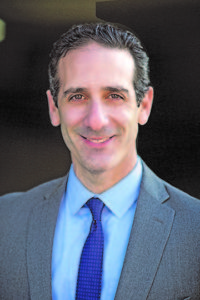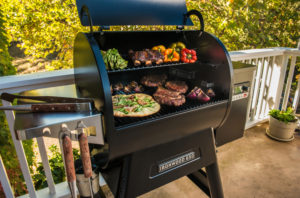
by Peter Boyles | Jun 25, 2021 | Blasting with Boyles
 For all of us that were raised in the late ’50s and mid-’60s television era, remember Rocky the Flying Squirrel, also known as Rocky and Bullwinkle? Inside of that show was a cartoon feature, Mr. Peabody and Sherman, who would get in the WayBack machine and they would visit historic events. As a little history geek, I loved that segment even though I knew it was far from the truth. And now as I age, they were more on the money than I knew.
For all of us that were raised in the late ’50s and mid-’60s television era, remember Rocky the Flying Squirrel, also known as Rocky and Bullwinkle? Inside of that show was a cartoon feature, Mr. Peabody and Sherman, who would get in the WayBack machine and they would visit historic events. As a little history geek, I loved that segment even though I knew it was far from the truth. And now as I age, they were more on the money than I knew.
Since we’re into the cancel culture now, social justice warriors, political correctness, and witch hunting, I thought how much fun it would be to get into the way back machine before we had to deal with what we have to deal with today, a bunch of 23-year-old witch hunters demanding to see the manager.
When I got in it, I took with me headlines and issues from 2021 in the United States of America knowing full well this would floor Mr. Peabody and Sherman, so let us begin.
- Singer calls us a broken nation demanding race be codified and redesigning the American flag.
- Illinois city cancels Fourth of July Parade but allows Juneteenth and gay pride celebrations.
- College lecturer says, “I’ve dreamt about unloading a revolver into any white person who gets in my way.”
- New Jersey school district removes the names of all holidays from school calendar.
- Denver teacher’s union was told of allegations against Tay Anderson two years ago and apparently helped fund his campaign.
- Joe Biden confuses Syria for Libya not once but three times in one sentence.
- Faith leaders rally in support of Park Hill safe camping site. Keep an eye on that one wrestling fans.
- Biden administration asks Americans to report potentially radicalized friends and family members.
- A Denver judge says the State of Colorado can force a Christian man to violate his religious beliefs.
- The View has a strange explanation why CNN’s Jeffrey Toobin should not lose his job over a public sex act.
- New Zealand weightlifter becomes first transgender athlete to complete in the Olympic games.
- Transgender BMX rider says if she wins an Olympic medal, she’ll burn the American flag on the podium.
- And last but not least, the majority of Republicans still believe the 2020 election was stolen from the the 2020 election was stolen from Donald Trump.
On a more serious note, can you name the nation, state, a country, or a government that allows the things that are happening to our culture, our language, our literature, and our Constitution that has survived or ended at a good place?
Watch the skies.
— Peter Boyles

by Mark Smiley | Jun 2, 2021 | Travel
Here We Are Stuck In The Middle
by Danny Foster and Bob Graham
Imagine, if you will, living in a time when you cannot express your political opinions, or any opinion for that matter, without being attacked, canceled, or dismissed. Imagine a time when loud demagogues control the Democratic Party and the Republican Party, and if you don’t walk in lockstep with the “leaders” of the Party, then you will be marginalized and called a racist or a socialist or an insurrectionist. Well imagine it no longer, this is America 2021, and pragmatism and thoughtful dialogue have left the building. We are all reaping what we have sowed by allowing the loudest voices to control our public discourse and policy. As much as we would like to blame the screeching voices on the Left, or the tin-foil hats on the Right, it is us, the majority of adults in this country, who are to blame. We are guilty of not standing up to the demagogues in the Democratic and Republican parties.

Danny Foster
The demagogues on the Left are no different than the demagogues on the Right. Sure, they have different political ideas, but their tactics are essentially the same. Viciously attack those whose opinions are different and embrace tribalism in its most visceral form. Nothing says “anti-fascist” like throwing bricks at your political opponents. There is great danger in assuming one’s side of an argument is free from fallibility or not otherwise open to question. We can only learn from each other if we are able to exchange ideas openly — without being shouted down by those with whom we disagree (after all we were both politically polarized, but through thoughtful discussion we have brought each other to the Center). When Rep. Ilan Omar and the rest of the Squad have become the loudest voices in the Democratic Party, and Reps. Lauren Boebert and Marjorie Taylor-Greene have become the loudest voices in the Republican Party, it leaves a wide gulf of unrepresented opinions in the middle. And on behalf of the Silenced Majority, let us just say that both Parties are collectively bumming out a large percentage of this country and we must stop being silent.
Common sense and maturity have long since abandoned the Parties and created a seemingly binary world. But it doesn’t have to be that way. A recent Gallup poll indicated that 40% of Americans consider themselves politically independent, the highest percentage ever recorded, while those holding themselves out as Democrats or Republicans has dramatically dropped in the past few years. That is because the majority of Americans are fed up with the extreme positions and tribalism sweeping our city councils, state legislatures, and the U.S. Congress. But unless the political mod-erates on both sides start exerting more political muscle and shutting down the polarizing rhetoric, the extremists will win. And we cannot let that happen.
We must refuse to let the fringes of these parties control our political dialogue. We should not be cowed into silence because we believe we will be attacked. If you are a Democrat, you shouldn’t be scared to say that you respect the police and that the De-fund the Police Movement is a terrible idea. Supporting our police doesn’t make you a bad Democrat, it makes you a grown-up. If you are a Republican, you shouldn’t be scared to say you are in favor of reasonable gun restrictions. That doesn’t make you a bad Republican, it makes you a good citizen. After all, 62% of all Americans favor a ban on semi-automatic weapons.

Bob Graham
What can you do? Don’t be afraid to state your opinion, even if your opinion is not the politically expedient one, and listen respectfully to those with whom you disagree. For example, when we see a tent city pop up in our neighborhood, we must treat the occupants of that tent city compassionately, but we also must strongly advocate for its immediate removal. And we shouldn’t feel guilty about saying this because tent cities are inhumane, dangerous, and the quickest way to decimate property values. Denver doesn’t want to be another San Francisco, Seattle, or Portland. Sure there are several local politicians on the Denver City Council who embrace homeless encampments to score political points, but at what cost? Don’t forget that over 80% of the voters in Denver voted to maintain the camping ban, not end it. So why are we all afraid to say it? Because so many are scared to be labeled insensitive, or even racist. If simply defending reasonable positions marks you as a bigot, then civic discourse becomes impossible and there is no way to compromise. You are entitled to your opinion and the Silenced Majority supports you.
We have enormous respect for Republican Congresswoman Liz Cheney and Democratic Senator Joe Manchin who have demonstrated true profiles in courage. Rep. Cheney had the guts to call out Donald Trump’s lie about the election being stolen even though it would have been much easier for her to toe the Republican line and Sen. Manchin has the guts to oppose extreme positions in the Democratic Party which has put him at odds with the Progressive wing of his Party.
Disagreements become insults when politics becomes a statement about who you are as a person. The children have been driving the bus long enough and they are steering us into on-coming traffic. It is time for the Silenced Majority to say Enough is Enough and take the wheel. (We’re sorry if this editorial “triggered” you, grow up.)
Danny Foster and Bob Graham have been law partners in Denver since 2000; danny@fostergraham.com, bob@fostergraham.com.

by Mark Smiley | May 26, 2021 | Travel

May 29 is Back to Barbecue Day, the official kickoff of grilling season.
(BPT) – The sound of the sizzle, the smell of foods cooking outdoors, the undeniable taste – it’s time to get back to the barbecue. For many people, a grill becomes a second kitchen. For others, it’s their primary way of cooking all year long.
“We need it more than ever after a year like this,” says Steven Raichlen, grilling authority, author and host of television’s “Project Fire.” “Grilling brings joy. Unleashing your inner pyromaniac is fun. Building a fire is fun. Waltzing the food from hot spots to cool spots is fun. Grilling is an interactive sport. Every grill session is different and that alone makes it joyful.”
More than just cooking good food, Raichlen says grilling is a bonding activity that focuses on a simple pleasure that everyone enjoys.
“It’s fun and uncanny how grilling brings people together. No one gathers around the stove to watch a pot of stew simmer. Light your grill, people congregate and you, the grill master, become master of ceremonies,” he says.
The appeal of grilling transcends generations, and many people are now shopping for new grills so they can enjoy cooking outdoors. The problem is there are many types of grills, different sizes and varying price points, so it’s difficult to know which is right for your needs.
Saturday, May 29, is National Back to Barbecue Day, one of the busiest shopping days of the year for new grills. For a grill buying guide, visit BBQ Outlets at www.bbqoutlets.com/grill-buying-guides. If you are looking to buy a new grill, the experts at the Hearth, Patio & Barbecue Association share some important things to keep in mind:
Types of grills to consider
Gas: For people who want convenience. Just like your kitchen stove, it can be ready to cook in 10 minutes, and it’s easy to regulate cooking temps.
Charcoal: For those who love being hands-on with the nuances of outdoor grilling. Some say charcoal provides the best flavor experience. Good for low and slow cooking and high heat searing.

Traeger
Pellet: For people who want the most in flavor. Wood pellet grills are among the most energy efficient and burn clean. Pellets come in varieties such as hickory, mesquite and oak, providing a truly flavorful cooking experience.
Electric: For people who love simplicity. Electric grills are designed to produce constant heat and operate without an open flame. Ideal for apartment or condo dwellers since they don’t require charcoal or propane.
Kamado: For people who love cooking all styles and seasons. Kamado grills’ excellent insulation is ideal for both grilling and smoking. They can use wood and charcoal and are ideal for roasting and baking.
Questions to ask before buying a grill
What do you love to cook? Many grills come with extra features ideal for certain foods, like rotisseries if you love a roasted chicken, side burners if you love soups and stews, or ample space for pizza stones if you frequently crave the ‘za.
How much time will you have to cook? If you’re hard pressed for free cooking time, consider the convenience of gas or electric grills. Love to pass the time cooking? A charcoal, smoker or kamado grill may be best for you.
How much space do you have? If you have a big backyard, consider a larger grill perhaps with a kitchen island to create a focal point for relaxation and entertaining. Premium portable or more compact grills are ideal for condos and apartments.
Once you have your grill at home and ready to go, it’s time to get cooking. Raichlen shares one of his favorite grill recipes below. Find more recipes, cooking tips and pledge to grill out at www.whyigrill.org.
Pamplona of Pork
Ingredients2 pork tenderloins, each 1 to 1-1/4 poundsCoarse salt – sea or kosher – and freshly ground black pepper3 tablespoons Dijon mustard1 roasted red bell pepper, stemmed, peeled, seeded and sliced into 1/4-inch strips (see note below)3 ounces thinly sliced smoked ham, sliveredOne 5.2-ounce package Boursin cheese or other soft garlic and herb cheese, crumbled4 strips thin-cut baconVegetable oil for oiling the grateYou’ll also need: Butcher’s string; 1 or 2 hardwood chunks or 1-1/2 cups hardwood smoking chips. If using the latter, soak in water to cover for 30 minutes, then drain. Directions1. Set up your grill for indirect grilling and heat to medium-high, about 400 degrees.2. Meanwhile, cut a deep pocket in the side of each pork tenderloin. Season the inside of the pocket with salt and pepper and paint with mustard. Stuff the peppers, ham and cheese into the pocket. Season the outside of the tenderloins with salt and pepper.3. Lay four 10-inch pieces of kitchen string on and parallel to your work surface. Lay a strip of bacon on and perpendicular to the strings. Top with one of the tenderloins. Lay a second strip of bacon on top of the tenderloin. Bring up the ends of the strings and tie. Trim the ends close to the knots. Repeat with the remaining tenderloin.4. Brush or scrape the grill grate clean and oil it well with vegetable oil. If using a charcoal grill, add the wood chunks or chips to the coals. On a gas grill, place in the smoker box or under the grate directly over the burners.5. Indirectly grill the tenderloins until nicely browned and the meat is cooked through to 145-155 degrees or as needed, about 40 minutes.6. Let the meat rest for 5 minutes. Remove the strings, then, using a sharp knife, preferably with a serrated blade, slice the tenderloin crosswise into 1/2-inch medallions. Transfer to a platter or plates.Note: The pepper can be prepared at a previous grill session. Heat the grill to high then roast the pepper until the skin is blackened and charred, 2 to 3 minutes per side. Alternatively, roast the pepper over an open flame on your gas stove or the side burner of your grill. Cover and refrigerate for up to a day if not using immediately.

by Luke Schmaltz | May 26, 2021 | Glendale City News
 by Luke Schmaltz
by Luke Schmaltz
In the past year, the Denver commercial property market has been flipped upside down, run through the wringer, and hung out to dry. While circumstances appear bleak in some areas, the twists and turns of pandemic-induced social upheaval are not without glimmers of hope and outright indications of future solvency.
Commercial and residential real estate are symbiotic halves of a larger whole, and just as one directly affects the other, the balance between the two can take on surprising configurations. Such is the current state of affairs in the Mile-High City, and property professionals from both sides of the fence are forging forth with equal amounts of bullish determination, speculative flexibility and hopeful trepidation.

Downtown offices may not quickly repopulate, as many work-from-home folks have relocated to the suburbs.
Parallel Perceptions
From the viewpoint of residential real estate professionals, the commercial market is a cliffhanger, a head-scratcher, and an anomaly compelling enough to draw curiosity that is far beyond casual observation. Jennifer Barnes of eXp Realty, LLC has considerable experience in the residential sector, and has watched with piqued interest as her area of the market reacts to the changing commercial sector. This area of the market is inevitably affected by the overnight replacement of traditional office settings with entire industries of remote workers. “The draw to being in the city is gone,” she begins. “There has been a huge run [on residential properties] across the whole Front Range — especially places like Conifer, Evergreen, and Elizabeth,” she explains. “The whole downtown Denver market is not what it was — people are not clamoring to be down there right now because they are working remotely. I mean, why would you want to live in a congested area if you don’t have to?” Barnes was fortunate enough to be on the upside of the remote worker trend, unlike other large real estate firms with huge offices and sizable leases to boot. Her firm, eXp, grew during the pandemic due to low overhead while others were forced to downsize because “they didn’t have the revenue from home sales because they were shut down during Covid, but they still had huge office building leases to pay.”
Meanwhile, from a real estate inspector’s viewpoint, the commercial property shift has created circumstances reminiscent of the pre-marijuana retail boom. Robert Crawford is owner/operator of Colorado Complete Home Inspections, and he points out, “Before we had the cannabis industry, we actually had a lot of empty warehouses and empty retail spaces. Then, something came along which allowed new investors to buy up the available spaces at a fraction of the price. The vacuum left behind by the Covid reminds me of that. The landscape now versus back then bears a striking similarity,” Crawford explains. “You’re seeing ‘for sale’ and ‘for lease’ signs on retail spaces in some districts and among commercial warehouses alike.” So, it seems the stage is once again set to favor a buyer’s market. Perhaps this indicates that once again, another influx of outside investment capital and enterprise is already underway.
A Dual Perspective

Shane Henry of 303 Property is amazed at how many cash-solvent investors are standing by to scoop up retail spaces.
Shane Henry, owner of 303 Property, has been working as a broker in the Denver commercial and residential markets for eight years. “When Covid hit, I thought commercial real estate was going to totally take a dive, but it didn’t,’’ he begins. “There’s still a lot of people out there with money, so as soon as a retail space becomes available, someone else is waiting to swoop in and scoop it up. So, it’s really interesting because I thought for sure it was going to be the opposite. It blows my mind, to be honest.” Henry continues, “A lot of people are showing up from other states like California with a lot of money from having just sold property there. So, they can come in and pay cash for spaces in Colorado.” Case in point: strip malls. Henry explains the robust state of occupancy in most of these retail destinations, “I’m not seeing lots of vacancies in them. If anything, I’m seeing almost more of a demand for these spaces.”
Letters From The Front
Meanwhile, a cross-section of those working exclusively in the trenches of Denver commercial real estate reveals a wide variety of viewpoints.
-

Vincent Grandi with Keller Williams Realty Urban Elite thinks vacant commercial properties offer some obvious social solutions.
Vincent Grandi of Keller Williams Realty Urban Elite contends that the work-from-home directive has gained momentum that may not be totally reversed. He sees the vacancies in the office building sector of the commercial market as an opening to address the 500 lb. elephant in the proverbial room. “This could be an opportunity to address the homeless crisis with a windfall of micro-type condos” he explains. While this is merely speculation and not a hard-and-fast solution, Grandi is also quick to point out the consequences of office buildings and warehouse properties which remain empty for too long. “Leaving all that property vacant is just presenting opportunities for things that aren’t good such as graffiti, arson, vandalism, and theft.”
- Mark Ryan, a broker with eXp Commercial Real Estate, lays it out plain and simple with the office building situation. “The biggest eye opener for me was how people working from home had such an effect on property values. Commercial property shifted from a landlord’s market to a tenant’s market overnight,” he begins. “What I’m seeing is a whole lot of properties coming on as ‘reduced rate’ listings.” While this is the case with office buildings due to the rigid nature of their intended use, it may not apply to other commercial properties. “Retail is different, because it can be sliced up in so many different ways,” Ryan explains.
-

Michael Griffin of Madison Commercial Properties feels that office building occupancy will return as a fiscal necessity.
Michael Griffin is a Managing Partner at Madison Commercial Properties in Cherry Creek, and he sees the effect of the work-from-home contingency on office space as a temporary circumstance that will correct itself. “Over time,” he attests, “people will be getting back to work [in offices]. Yes, Covid affected office space, for sure, but the last six weeks have been really busy,” he explains. “For some industries, office dynamics and corporate culture rely heavily on in-person workplace environments. As a business owner, I know for a fact that it is crucial to directing, motivating and communicating with your staff.”
- Yvette Kimmel is a broker with Ai3 Properties, which handles a network of 10 office buildings in Southeast Denver. She paints an upbeat picture of the commercial real estate market, at least as far as her properties are concerned. “We have every reason to be encouraged” she begins. “We have been extremely busy, and the only thing that is different in our business is that our tenants are just kind of moving around. In some cases, it is to smaller suites … but for the most part, we are staying very full,” she explains. “I think we are in an enviable position because we are not in prime downtown real estate, and we are not in prime DTC real estate — we’re right between those, so we’ve got people moving out of those expensive suites into something that is still in a prime location without those high prices per square foot,” she continues. Kimmel is confident that office culture is an integral part of American work life, saying, “Part of the experience is the social experience.” Kimmel also contends that, as society opens back up, in-person retail may also be in for a much-needed surge. “We don’t all want to be buying from Amazon for the rest of our lives,” she says.
-

Rachel Colorosa of Colorosa Commercial Properties takes a data-driven approach to her informed speculations.
Rachel Colorosa, Executive Director of Colorosa Commercial Properties, is a self- professed “statistics geek” and a graduate of Colorado College with a B.A. in International Political Economics. When analyzing the effect of Covid-19, the work-from-home contingency and the stark vacancies in large commercial office buildings — she dug into the numbers. She cites a series of recent surveys by Gensler — a global (50 locations worldwide) architecture, design, and planning firm focused on data-driven insights. “The data shows that, because of Covid and social distancing, people don’t like confined spaces — especially elevators,” she begins. “This means large downtown office buildings may not recover, but suburban office facilities under four stories will be at capacity.” Colorosa sees the current trends in retail, office, and industrial real estate as three intersecting lines which form an “x” with a horizontal line through it. “There’s a negative trend in retail, office is flatlining, and industrial is going way, way up,” she explains. Based on the Gensler data, Colorosa feels “we’ll see a lot of retail turned into offices” and “empty big box retail spaces will be repurposed as call centers or Amazon fulfillment centers.”
Currently, diagnosing the status of commercial real estate in Denver is speculative, and relies heavily on the informed perception of the beholder. At least one thing is clear — things are happening — which is a welcome change from last year’s grim alternative.

 For all of us that were raised in the late ’50s and mid-’60s television era, remember Rocky the Flying Squirrel, also known as Rocky and Bullwinkle? Inside of that show was a cartoon feature, Mr. Peabody and Sherman, who would get in the WayBack machine and they would visit historic events. As a little history geek, I loved that segment even though I knew it was far from the truth. And now as I age, they were more on the money than I knew.
For all of us that were raised in the late ’50s and mid-’60s television era, remember Rocky the Flying Squirrel, also known as Rocky and Bullwinkle? Inside of that show was a cartoon feature, Mr. Peabody and Sherman, who would get in the WayBack machine and they would visit historic events. As a little history geek, I loved that segment even though I knew it was far from the truth. And now as I age, they were more on the money than I knew.











